| Author |
Message |
Maurizio D'Angelo

|
 Posted: Sat 18 Jul, 2009 1:56 pm Post subject: the section of Brescia Spadona Posted: Sat 18 Jul, 2009 1:56 pm Post subject: the section of Brescia Spadona |
 |
|
Hi all,
I have a question:
As is the section of Brescia Spadona?
Someone has pictures where you see the section of this sword?
Thanks in advance for the help.
Maurizio
|
|
   |
 |
David E. Farrell

Location: Evanston, IL Joined: 25 Jun 2007
Posts: 156
|
 Posted: Sat 18 Jul, 2009 8:01 pm Post subject: Posted: Sat 18 Jul, 2009 8:01 pm Post subject: |
 |
|
as far as I know it is a diamond-cross section with a partial fuller. Any particular details you want?
Albion makes a very nice re-creation of it as well.
AKA: 'Sparky' (so I don't need to explain later  ) )
For he today that sheds his blood with me shall be my brother
-- King Henry, Henry V, William Shakespeare
Before I came here I was confused about this subject. Having listened to your lecture I am still confused... but on a higher level.
-- Enrico Fermi
|
|
  |
 |
|
Eric W. Norenberg
|
 Posted: Sun 19 Jul, 2009 12:32 am Post subject: Posted: Sun 19 Jul, 2009 12:32 am Post subject: |
 |
|
Hello Sirs,
Perhaps we can appeal to Peter Johnsson - he's handled the original, obviously to great advantage...
I've seen a number of photos online of this sword, but one of my favorites is included in Mr. Johnsson's essay "What is an Edge?", in Lindholm and Svard's "Knightly Art of the Longsword," 2003, pg. 217. This particular photo shows a lot of reflected light on the blade's surface, and it looks to my eyes as if the fullered strong has a slightly lenticular or a very convex diamond section, transitioning into a flatter diamond section beyond the fuller. There's a cross-section illustration on pg. 219 (cross section #3) that I'm assuming is also the Brescia, from a point past the fuller, that looks like a slightly convex diamond here, too, with little secondary bevel to be seen.
Maurizio, you're a lot closer to Brescia than I am, to be sure... If you ever visit the sword in person, please do share your thoughts (and photos!) Molte grazie!
-Eric
|
|
  |
 |
|
Peter Johnsson
Industry Professional
|
 Posted: Sun 19 Jul, 2009 12:15 pm Post subject: Posted: Sun 19 Jul, 2009 12:15 pm Post subject: |
 |
|
Hello Maurizio and others!
This is a pretty common situation. Consulting museum catalogues and publications can provide both reliable and less than reliable information.
Often weapons are described by scholars who are not so interested in those details that fascinate us aficionados, but more in broad descriptions like typology, provenance and dating.
Information of a kind needed by a sword smith can rarely be had from written sources. That why I strive to see as many originals as possible, and base my work on my own documentation of these.
In the case of the Brescia Spadona, the section is not a simple diamond, nor is it lenticular, unless a very simplified or general description is made.
The sword has obviously seen both use (evident in irregularities caused by re-sharpening) and re-polishing. This has caused lines to become somewhat soft and undulating. The cross section is very evident when you hold the sword in your hand, and I think also if you see it displayed in its museum case. It may not show in all photographs depending on how light reflects on the surface, however. That might be an explanation for discrepancies in written descriptions of the sword.
Below I attach a cropped detail of a photo of the blade. The play of light and shadow show pretty clearly the cross section of the blade I think.
This section is actually a very common feature for type XVIa blades. There are many surviving with just this section. Another sword kept in the Royal Armouries in Leeds is the smaller brother of the Spadona in Brescia. THis sword is published in "Records" as XVIa.5 on page 156. Oakeshott points out there is a distinct rib on the lower half of the blade, but neglects to describe the clear octagonal section.
Also compare to XVIa.1 and XVIa. 3 in "Records": both these swords have narrow edge bevels, but a flat body making the cross section hexagonal. These octagonal and hexagonal sections are common on high medieval war swords: XIIa, XIIIa, XVIa can all e seen made according to this design concept. The type XVII can perhaps be seen as a specialized application of the same principle.
A little rust, some wear and tear and viewing in bad lighting can make these blades look lenticular or diamond shaped. Especially if a curator has to catalogue a large number of swords in a short space of time....
 Attachment: 33.18 KB Attachment: 33.18 KB
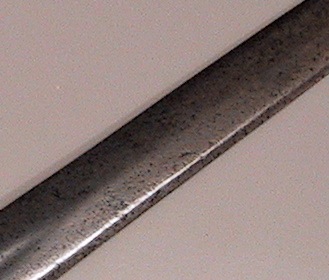
|
|
   |
 |
Maurizio D'Angelo

|
 Posted: Sun 19 Jul, 2009 5:13 pm Post subject: Posted: Sun 19 Jul, 2009 5:13 pm Post subject: |
 |
|
| David E. Farrell wrote: | as far as I know it is a diamond-cross section with a partial fuller. Any particular details you want?
Albion makes a very nice re-creation of it as well. |
hi David, thanks for your information.
You are right. I have seen the Albion reproduction.
My friend (in Northern Italy) who bought the reproduction of Albion says:
handling between the two swords is very similar.
He said: I have in my hands "la lupa" for a whole morning.
(We Italians call the sword of Brescia la lupa, very familiarly).
The comparison of handling is amazing.
But, the question is not resolved. The section, how?
| Eric W. Norenberg wrote: | Hello Sirs,
This particular photo shows a lot of reflected light on the blade's surface, and it looks to my eyes as if the fullered strong has a slightly lenticular or a very convex diamond section, transitioning into a flatter diamond section beyond the fuller. There's a cross-section illustration on pg. 219 (cross section #3) that I'm assuming is also the Brescia, from a point past the fuller, that looks like a slightly convex diamond here, too, with little secondary bevel to be seen.
Maurizio, you're a lot closer to Brescia than I am, to be sure... If you ever visit the sword in person, please do share your thoughts (and photos!) Molte grazie!
-Eric |
Hi Enric
I saw the sword in Brescia, when I saw "la Lupa" a passion for swords were not as strong as now.
I remember a section lenticular, but ... it is very difficult to judge.
I was reflecting on spotlihgt "What is' historical accuracy" '?
Some things are objective can become subjective. This is really strange. But perhaps the whole story is strange. Even in countries where it is studied influence certain truth. I stopped, the risk of being off-topic.
| Peter Johnsson wrote: | Hello Maurizio and others!
In the case of the Brescia Spadona, the section is not a simple diamond, nor is it lenticular, unless a very simplified or general description is made.
The sword has obviously seen both use (evident in irregularities caused by re-sharpening) and re-polishing. This has caused lines to become somewhat soft and undulating. The cross section is very evident when you hold the sword in your hand, and I think also if you see it displayed in its museum case. It may not show in all photographs depending on how light reflects on the surface, however. That might be an explanation for discrepancies in written descriptions of the sword.
|
Hello Peter,
Effects of light is much talk.
(evident in irregularities caused by re-sharpening) and re-polishing is much talk.
Perhaps I should return to Brescia, and talk with the armorer, he says it is lenticular, but might err.
“Armi e Armature Lombarde, Lionello Boccia, edition 1980, pag. 192.”
In this book is written: La sezione č interamente lenticolare.
I do not have this book, is very rare in Italy there in Florence, Rome, Milan. I requested a photocopy of that page. I tried, here only a member of the Forum, has that book. If he wants to post here that may photocopy. I have high regard for Lionello Boccia, consider one of the largest. I have high regard for Peter, I consider one of the largest.
In Italy it appears that all argue for a section lenticolare.
One thing that surprised me is knowing that the sword of Brescia does not like staying in a protective outer covering,
it is often in the hands of someone.
Tomorrow, I will prepare a draft, I try to give my explanation.
Then you think about this
|
|
   |
 |
Chad Arnow
myArmoury Team


|
 Posted: Sun 19 Jul, 2009 6:03 pm Post subject: Posted: Sun 19 Jul, 2009 6:03 pm Post subject: |
 |
|
Maurizio,
If you look at Peter's picture, it should be pretty obvious that it is not a lenticular section. With a mid-rib, it cannot be lenticular. With the prominent edge bevels, it cannot be lenticular in the normal sense.
Check out this diagram of blade sections from one of our articles:
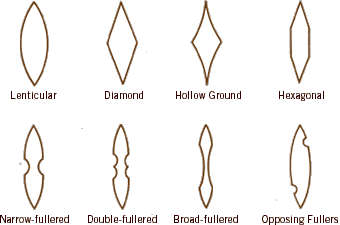
The Brescia sword clearly is not lenticular, especially in the tip section. It is kind of a hybrid of the diamond and hexagonal sections pictured.

ChadA
http://chadarnow.com/
|
|
    |
 |
|
Peter Johnsson
Industry Professional
|
 Posted: Mon 20 Jul, 2009 2:12 am Post subject: Posted: Mon 20 Jul, 2009 2:12 am Post subject: |
 |
|
Maurizio,
Thank you for your kind words.
When you visit Brescia again, please make sure to give Angelo Tolotti my best regards. He was a very gracious and generous host to me when I visited almost ten years ago.
What I say about lighting having an effect on how you appreciate form is not just idle talk. Ask any photographer, and you will get that confirmed, It is a basic principle of photography. There are several photographs of La Lupa published in various books. Each of them gives a different impression of the sword. One makes it look almost flat and very thin.
It is surprising to hear you dismiss my observation that the shape of a blade is affected by re-sharpening, and re-polishing. How come you think so?
Below I attach a snap shot of the sword in its display case. It is not a very good photo, but still shows the details under discussion. The top most edge bevel catches the light clearly and the mid rib is very evident. I think you can also make out that the edges have some dips and curves caused by grinding away nicks or blunting from use.
 Attachment: 41.65 KB Attachment: 41.65 KB

|
|
   |
 |
|
Peter Johnsson
Industry Professional
|
 Posted: Mon 20 Jul, 2009 2:50 am Post subject: Posted: Mon 20 Jul, 2009 2:50 am Post subject: |
 |
|
A bit of topic, perhaps....
Making these trips to various places sometimes bring about nice side effects.
Angelo Tolotti and his colleague Dario Quartini gave generously not only of their time, but also presented me with a gift to take home to Sweden; a beautiful block of olive wood. This little relic of the trip, I set aside until the right project presented itself.
Eventually the olive was shaped into the hilt of a Gladius Hispaniensis. I found that to be a fitting use for the wood. This is one of the few swords I´ve kept for myself, mostly for the reason it reminds me of that fabulous trip to northern Italy.
 Attachment: 17.63 KB Attachment: 17.63 KB

 Attachment: 18.02 KB Attachment: 18.02 KB
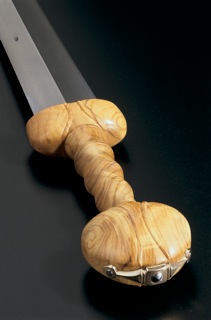
|
|
   |
 |
Bruno Giordan

|
 Posted: Mon 20 Jul, 2009 4:14 am Post subject: Posted: Mon 20 Jul, 2009 4:14 am Post subject: |
 |
|
| Maurizio D'Angelo wrote: | | David E. Farrell wrote: | as far as I know it is a diamond-cross section with a partial fuller. Any particular details you want?
Albion makes a very nice re-creation of it as well. |
hi David, thanks for your information.
You are right. I have seen the Albion reproduction.
My friend (in Northern Italy) who bought the reproduction of Albion says:
handling between the two swords is very similar.
He said: I have in my hands "la lupa" for a whole morning.
(We Italians call the sword of Brescia la lupa, very familiarly).
The comparison of handling is amazing.
But, the question is not resolved. The section, how?
| Eric W. Norenberg wrote: | Hello Sirs,
This particular photo shows a lot of reflected light on the blade's surface, and it looks to my eyes as if the fullered strong has a slightly lenticular or a very convex diamond section, transitioning into a flatter diamond section beyond the fuller. There's a cross-section illustration on pg. 219 (cross section #3) that I'm assuming is also the Brescia, from a point past the fuller, that looks like a slightly convex diamond here, too, with little secondary bevel to be seen.
Maurizio, you're a lot closer to Brescia than I am, to be sure... If you ever visit the sword in person, please do share your thoughts (and photos!) Molte grazie!
-Eric |
Hi Enric
I saw the sword in Brescia, when I saw "la Lupa" a passion for swords were not as strong as now.
I remember a section lenticular, but ... it is very difficult to judge.
I was reflecting on spotlihgt "What is' historical accuracy" '?
Some things are objective can become subjective. This is really strange. But perhaps the whole story is strange. Even in countries where it is studied influence certain truth. I stopped, the risk of being off-topic.
| Peter Johnsson wrote: | Hello Maurizio and others!
In the case of the Brescia Spadona, the section is not a simple diamond, nor is it lenticular, unless a very simplified or general description is made.
The sword has obviously seen both use (evident in irregularities caused by re-sharpening) and re-polishing. This has caused lines to become somewhat soft and undulating. The cross section is very evident when you hold the sword in your hand, and I think also if you see it displayed in its museum case. It may not show in all photographs depending on how light reflects on the surface, however. That might be an explanation for discrepancies in written descriptions of the sword.
|
Hello Peter,
Effects of light is much talk.
(evident in irregularities caused by re-sharpening) and re-polishing is much talk.
Perhaps I should return to Brescia, and talk with the armorer, he says it is lenticular, but might err.
“Armi e Armature Lombarde, Lionello Boccia, edition 1980, pag. 192.”
In this book is written: La sezione č interamente lenticolare.
I do not have this book, is very rare in Italy there in Florence, Rome, Milan. I requested a photocopy of that page. I tried, here only a member of the Forum, has that book. If he wants to post here that may photocopy. I have high regard for Lionello Boccia, consider one of the largest. I have high regard for Peter, I consider one of the largest.
In Italy it appears that all argue for a section lenticolare.
One thing that surprised me is knowing that the sword of Brescia does not like staying in a protective outer covering,
it is often in the hands of someone.
Tomorrow, I will prepare a draft, I try to give my explanation.
Then you think about this |
Maurizio whence this nickname "La lupa" came from? It is the first time I hear it.
The emblem of Brescia is a lion the town was nicknamed the Lioness by some italian poet of the nineteenth century: also Lupa has a bad name in latin.
Rome has a primal connection with a she wolf which was actually not an animal but a human who greeted the two mythical orphans Romulus and Remus. As for the secondary meaning of lupa you should know it as well.
|
|
  |
 |
Maurizio D'Angelo

|
 Posted: Mon 20 Jul, 2009 5:20 am Post subject: Posted: Mon 20 Jul, 2009 5:20 am Post subject: |
 |
|
| Peter Johnsson wrote: |
Maurizio,
Thank you for your kind words.
When you visit Brescia again, please make sure to give Angelo Tolotti my best regards. He was a very gracious and generous host to me when I visited almost ten years ago.
What I say about lighting having an effect on how you appreciate form is not just idle talk. Ask any photographer, and you will get that confirmed, It is a basic principle of photography. There are several photographs of La Lupa published in various books. Each of them gives a different impression of the sword. One makes it look almost flat and very thin.
It is surprising to hear you dismiss my observation that the shape of a blade is affected by re-sharpening, and re-polishing. How come you think so?
. |
hello,
no Peter.
Regarding the effect of light is not a dispute.
Even for re-sharpening, and re-polishing., is not a dispute. it is true, it speaks a lot, even here in Italy.
I think my thoughts clear now. it is not a dispute.
I will give your greetings
ciao, Peter
Maurizio
| Bruno Giordan wrote: |
Maurizio whence this nickname "La lupa" came from? It is the first time I hear it.
The emblem of Brescia is a lion the town was nicknamed the Lioness by some italian poet of the nineteenth century: also Lupa has a bad name in latin.
Rome has a primal connection with a she wolf which was actually not an animal but a human who greeted the two mythical orphans Romulus and Remus. As for the secondary meaning of lupa you should know it as well. |
Hello, Bruno,
I do not think that the name derives from Rome. I do not think it comes from Brescia.
I think the she-wolf (La Lupa), derived from "the wolf of Passau" Solingen.
In fact, these blades were imported from southern Germany. Was then mounted on the guard and pommel, typically Italian.
Certainly know the Nova Scrimia, I think you will agree that people are trained.
Ask how is called the Sword of Brescia, they will answer you, La Lupa, very familiarly.
I miei saluti, migliori, Bruno.
Maurizio
|
|
   |
 |
Bruno Giordan

|
 Posted: Mon 20 Jul, 2009 8:07 am Post subject: Posted: Mon 20 Jul, 2009 8:07 am Post subject: |
 |
|
| Maurizio D'Angelo wrote: | | Peter Johnsson wrote: |
Maurizio,
Thank you for your kind words.
When you visit Brescia again, please make sure to give Angelo Tolotti my best regards. He was a very gracious and generous host to me when I visited almost ten years ago.
What I say about lighting having an effect on how you appreciate form is not just idle talk. Ask any photographer, and you will get that confirmed, It is a basic principle of photography. There are several photographs of La Lupa published in various books. Each of them gives a different impression of the sword. One makes it look almost flat and very thin.
It is surprising to hear you dismiss my observation that the shape of a blade is affected by re-sharpening, and re-polishing. How come you think so?
. |
hello,
no Peter.
Regarding the effect of light is not a dispute.
Even for re-sharpening, and re-polishing., is not a dispute. it is true, it speaks a lot, even here in Italy.
I think my thoughts clear now. it is not a dispute.
I will give your greetings
ciao, Peter
Maurizio
| Bruno Giordan wrote: |
Maurizio whence this nickname "La lupa" came from? It is the first time I hear it.
The emblem of Brescia is a lion the town was nicknamed the Lioness by some italian poet of the nineteenth century: also Lupa has a bad name in latin.
Rome has a primal connection with a she wolf which was actually not an animal but a human who greeted the two mythical orphans Romulus and Remus. As for the secondary meaning of lupa you should know it as well. |
Hello, Bruno,
I do not think that the name derives from Rome. I do not think it comes from Brescia.
I think the she-wolf (La Lupa), derived from "the wolf of Passau" Solingen.
In fact, these blades were imported from southern Germany. Was then mounted on the guard and pommel, typically Italian.
Certainly know the Nova Scrimia, I think you will agree that people are trained.
Ask how is called the Sword of Brescia, they will answer you, La Lupa, very familiarly.
I miei saluti, migliori, Bruno.
Maurizio |
Ok, I'm familiar with another school.
In any case I guess the brescian connection to be very thin.
There are other interesting medieval swords in the Marzoli lab I could visit while taking pics for a book (couple of XIV century estocs, early XVI century venetian style arming swords etc, but they are not on display, presumably for being in excavated conditions.
Actually they show interesting handling characteristics.
|
|
  |
 |
|
Eric W. Norenberg
|
 Posted: Mon 20 Jul, 2009 10:58 am Post subject: Posted: Mon 20 Jul, 2009 10:58 am Post subject: |
 |
|
Hello All,
I just wanted to thank Peter for sharing his knowledge, and those photos. Truly, every photograph I have seen of this one seems to reveal a different blade section, but now I think I get it. The close - up shot on the fuller termination surprised me a bit, particularly the prominent edge bevels, but now all those other photos make more sense.
Lovely gladius, too. Quite an appropriate souvenir.
-Eric
|
|
  |
 |
Chad Arnow
myArmoury Team


|
 Posted: Mon 20 Jul, 2009 11:04 am Post subject: Posted: Mon 20 Jul, 2009 11:04 am Post subject: |
 |
|
Here is a very (very) crude graphic I threw together to illustrate the section. It's nowhere near to scale and is very (very) crude. The lines don't line up, etc. It's crude and crappy, quick and dirty.
The real cross-section is likely somewhat (or very) different, but I put this together to illustrate what is meant when people call this blade eight-sided.
 Attachment: 11.06 KB Attachment: 11.06 KB


ChadA
http://chadarnow.com/
|
|
    |
 |
Sean Flynt

|
|
   |
 |
Luka Borscak

|
 Posted: Mon 20 Jul, 2009 3:06 pm Post subject: Posted: Mon 20 Jul, 2009 3:06 pm Post subject: |
 |
|
|
So basically it's a flattened diamond with a pretty big secondary bevel? I'm half kidding but it sure looks like it.
|
|
  |
 |
Maurizio D'Angelo

|
 Posted: Mon 20 Jul, 2009 4:53 pm Post subject: Posted: Mon 20 Jul, 2009 4:53 pm Post subject: |
 |
|
hi, all
The measures are: width 55 mm, 6 mm thick.
drawings below indicate:
1) section 8 Diamond faces (red)
2) Section lenticular (yellow)
3) the two overlapping sections. (red and yellow)
This is what you get. I think that, if I make these sections C.N.C. the debate no longer makes sense.
It is clear for all. The sections are markedly different. But...
The ancient swords were forged, were often applied to other sheet steel and welded with hammer. Make a sword with a hammer, it is not easy.
It is normal to expect a different section and a little bit imprecise, the CNC builds better.
Peter says: The sword has obviously seen both use (evident in irregularities caused by re-sharpening) and re-polishing. This has caused lines to become somewhat soft and undulating.
This is true.
Now, if the sword of Brescia, re-sharpening and re-polishing have rounded corners. Imagine if you round off the corners, the two sections are very similar. By a section with 8 diamond faces can become almost lenticular.
contrary to this:
The diamond age is Next to the section lenticular. Affiliates habit had learned to sharpen following a corner.
Even today sharpen following a corner. If a lenticular section, you run a sharpening angle, here it is easy to exchange for sharpening one side of the section.
To be honest, in some parts of the photo posted by Peter, it seems clear that the diamond, in other parts no.
I have some photos that show the section lenticular very evident. But I can not post those photos here. They belong to a study of the sword is not yet published. If I get permission, (already asked)
I can send in P.M. to Chad and Peter, with the promise of seeing, but not publish those photos.
Italian scholar , he says: it's easy to exchange for a face-to-diamond, which is a sharpening. Species on the strong and shortly after fuller. In performance is a favorite section to a 8-sided diamond
I think to have written a lot for someone who does not know English well. 
I do not think I have the truth, certainly grounds for reflection.
Regards
Maurizio
 Attachment: 55.65 KB Attachment: 55.65 KB
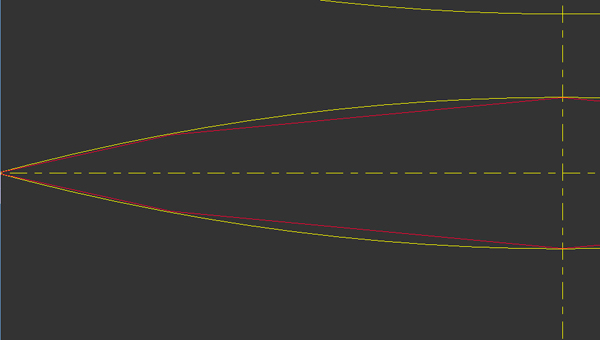
 Attachment: 45.94 KB Attachment: 45.94 KB
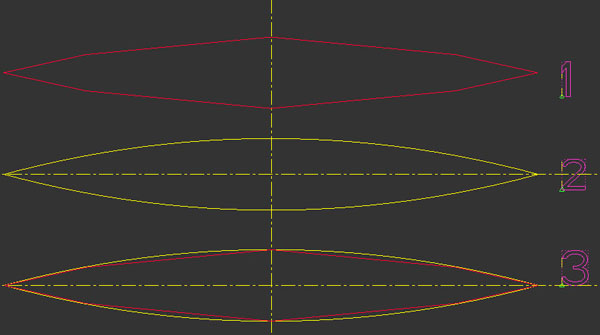
|
|
   |
 |
Gianluca Zanini

|
 Posted: Mon 20 Jul, 2009 6:27 pm Post subject: Posted: Mon 20 Jul, 2009 6:27 pm Post subject: |
 |
|
Dear List,
I have been a user of this forum for a couple of years, and even if i posted only twice i keep on reading this interesting forum.
I live in Brescia and i am intersted in historical fencing. I even have enthusiastic interest for hoplology, but that's it.
I have good contact with museum direction and i have oganized sevral event on the keep of the castle, where the Marzoli's collection is kept. Inluding having the opportunity to handle and study a dozen of specimens. I will certainly forward greatings to Angelo if P.Johnson likes. We spoke a lot of the she-wolf and the brescia spadona. Angelo is even a damasco knife maker.
Lupa, "she-wolf", is just the name with which we "baptised" it. A femele name as we are used to.
I feel this sword a bit "mine" or "our"(bresciani) so it is just a funny way to remark proudly teh belonging to the city.
The court of arm of the city is dedicated to the "she-lion", so to call her "she lion", it would have been not that much original. 
I have to say that Albion make very good quality sword, in particular in regards of their dinamic characteristic: for a fencer like me it is a pleasure to handle such a swords.
The first sword I purchased from Albion-Europe was of course Brescia Spadona.
I have had the opportunity to handle the original for a day, and I have to say reproduction is excellent and very precise.
In my opinion, again I am a fencer not a sword maker, Brescia Spadona deserve absolutely the money I spent.
It is only 7mm longer, supposing rightly the original new point, and with the supposed new edge only around 40 gramm heavier, consequently with the CoB only 3/4mm longer. And many other particulars tha can be considered if you have study the original.
I even had the pleasure to make acouple of fendenti and thrust, but i could grasp the handle for its bad condition so i could only grasp the tallone of the blade with thumb and index and the pommel with the other hand.
As far as I can say handling characteristic are almost the same.
Testing the CoP of the original, it taste a bit "softer".
Next month we had a seminar on the green of the keep, and I took the baby to her mum. We were with the direction of the museum, and we certainly miss the presence of Peter Johnson. I want to invite him and you all for the next year summer seminar at the keep where we can even celebrate the musem city.
In regards of the section I think to be not enough experienced to say how a blade could be after several polishingan sharpening. Therefore I will link to a couple of pic I take, and let people more expert and professional than me draw their conclusion.
Instead in regards of the sword marks I can share my litle reseach, which do not want to be authoritative in any way, but simply my enthusiast consideration.
First hs to be said that on the art of Spaderia of Brescia, only few localhoplologist had IMO the real idea of how it was.
Brescia sometime live in the shade of Milan, and fortunately many rearches and founds tell us that not only the fire arm were protagonist during the centuries.
Brescia belonged to the replublic of Venice for 4 century, and supplied most of the northen Italy swords and armour demand.
Anyway i ask different scholar about the mark of the sword having very high res picture of the shewolf marks.
It not seem to be exactly the"wolf"of Passau, it seem to be an more antiqe mark of Passau: the unicorn.
Others say this marks are common in other areas of northen Italy like Belluno (north east) and I am waiting for the documented evidence of this local hoplolog.
In the case of course the blade is not German.


Gianluca Zanini
PS i am of course authorised by the museum to use the above photographs and sharing with others scholar, on the other hands I ask you to refrein to use them for other use than your personal. In case the administrator of the forum permit
I could create an album of the museum
Sorry for the long post and errors
|
|
   |
 |
Maurizio D'Angelo

|
 Posted: Tue 21 Jul, 2009 5:57 am Post subject: Posted: Tue 21 Jul, 2009 5:57 am Post subject: |
 |
|
Hello, Gianluca.
I see that if I write at night, you do it early in the morning.
Digression, separately.
Even here, in a hoplology environment, there are rumors that the blade of Brescia, is not German.
For a certain, Bresciano armorer had that mark. But look official publications, which certainly will follow, with the evidence of what was said. The tradition of Brescian weapons can not be questioned, it would go against the story. I am sorry for the Germans ...
I hope that soon, also another interesting study, is published.
I will stop here, the discussion would be off-topic.
I thank you and Peter for the photos.
Please to offer, special thanks to the Brescia Museum Balzoli, which allowed you to post these photos.
In your last picture, the lenticular section seems to be confirmed. The sharpening along strong.
Ciao, Gianluca.
Maurizio
By your photo Zoom.
 Attachment: 52.94 KB Attachment: 52.94 KB

 Attachment: 139.85 KB Attachment: 139.85 KB
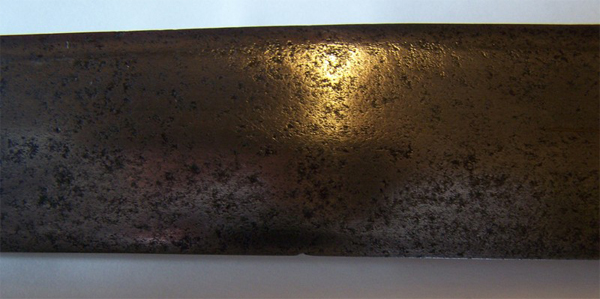
|
|
   |
 |
|
Peter Johnsson
Industry Professional
|
 Posted: Tue 21 Jul, 2009 7:23 am Post subject: Posted: Tue 21 Jul, 2009 7:23 am Post subject: |
 |
|
Gianluca,
Thank you very much for your words.
I especially appreciate your views as a swordsman, confirming we can get some things pretty much on target sometimes at least 
I would love to visit Brescia again: it is very nice to invite me. There are many things I would like to see more of in this area. To see the Marzoli collection again is something I´ve long looked forward to. Last time I only got to spend a day and a half in the city. Wonderful, but much too short.
It would also be very valuable for me to have an opportunity to make a side-by-side comparison between the original and the reconstruction.
|
|
   |
 |
|
Peter Johnsson
Industry Professional
|
 Posted: Tue 21 Jul, 2009 7:38 am Post subject: Posted: Tue 21 Jul, 2009 7:38 am Post subject: |
 |
|
| Luka Borscak wrote: | | So basically it's a flattened diamond with a pretty big secondary bevel? I'm half kidding but it sure looks like it. |
Yes,
That is pretty much it.
Only thing I am wary about with that wording, is that secondary bevel is no normally understood as a result from sharpening and not an intentional element of the geometry.
The narrow edge bevels are too well defined (even if the ridge line is somewhat rounded/softened) and to constant to be a result from re-sharpening of the blade.
The cross section was made as a defined octagonal form to begin with. It was shaped both from forging but also quite a bit from grinding, I would guess.
There are a number of small irregularities and uneven patches along the length of the sword. If you take one part and focus on that alone, you will get a less than accurate image of the whole blade. You need to see the complete blade and weigh this impression against the different parts to get an idea of the fullness of the shape.
The sword that is produced by Albion is intended to show what the sword could have looked like when new. Each sword made will be ever so slightly different, since they are ground by hand. These small regularities are within the character of the original. If several swords were made at the same time alongside of the original, I am convinced they would vary more when compared to each other. This is always a difficult balance to strike in reconstructions. You want a high degree of consistency, but at the same time an element of organic expression. Take to this that different customers expect (and prefer) different levels of precision. It is a balance to strike.
If you look at the last image that Maurizio posted it might perhaps seem to support a lenticular section, if you really want to find that feature. I, on the other hand, see it as a clear example of an octagonal section where the midrib has been softened by re-polishing (and it might also have been a bit rounded to begin with). Again, if you look at small sections, you will get a different impression, than if you see the complete sword and weigh the information together as a whole.
|
|
   |
 |
|
|
You cannot post new topics in this forum
You cannot reply to topics in this forum
You cannot edit your posts in this forum
You cannot delete your posts in this forum
You cannot vote in polls in this forum
You cannot attach files in this forum
You can download files in this forum
|
All contents © Copyright 2003-2025 myArmoury.com — All rights reserved
Discussion forums powered by phpBB © The phpBB Group
Switch to the Basic Low-bandwidth Version of the forum
|

